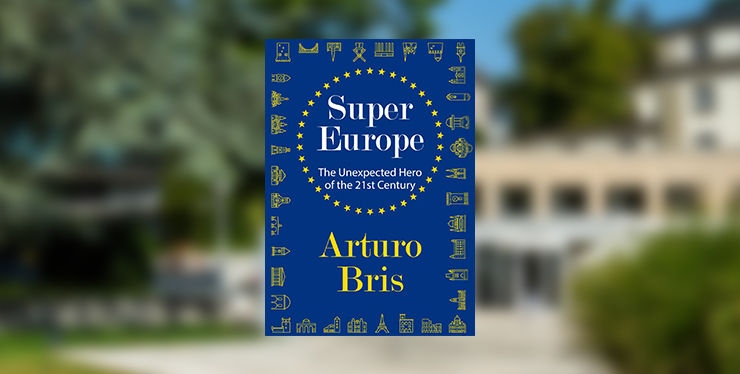
GDP is dead. Long live ‘happiness’
The modern concept of Gross Domestic Product (GDP) was developed by economist Simon Kuznets in 1934. Since then, and especially after the Bretton Woods Accords, GDP has been the accepted standard for measuring and managing the size of an economy. It is based on simple accounting and can be calculated using output, expenditure, or income figures. Therefore, it provides governments with an efficient tool to pull the main levers of the economy, but also a measure of success that, because of its widespread use, allows governments to benchmark policies as well.
GDP does not measure it all—for starters, it ignores the relationship between economic growth and income inequality. Growth is very often a poor measure of prosperity, despite it being from its original design Kuznets’ objective when he warned that “any claim to significance [National Income] would have would lie in its presumptive usefulness as an appraisal of the contribution of economic activity to the welfare of the country’s inhabitants, present and future”. Between 1960 and 2015, Colombia’s GDP per capita has grown in all but one year (1999), placing the country as the growth world champion—yet it is not yet highly competitive. Social criticism has mounted after the observation that, while in the last decade GDP has grown on average in most developed markets, real wages have declined because most of the gains of a bigger economy have rewarded capital, not labor. As a result, national governments and international organizations have started looking for alternatives.
During the 2017 World Government Summit recently held in Dubai this issue was discussed in depth. It was encouraging to find out that several countries have already starting addressing the previous concerns about GDP. The Kingdom of Bhutan introduced Gross National Happiness indicators in 2011. In 2012 Japan conducted its first Quality of Life Survey and had already established a Cabinet Commission on Measuring Well-being in 2010. Attempts to incorporate happiness and wellbeing have also made their entry into some education systems: In 2013 the Republic of Korea established a policy of “Happy Education for All”, and Singapore has integrated Social and Emotional Learning as part of the Character and Citizenship Education syllabus in 2013. The European Bank for Reconstruction and Development (EBRD) has already conducted three international surveys to assess the level of life satisfaction in 34 countries. Interestingly, we also heard how new metrics and assessments are informing actual policy decisions, a good example being the “What Works Center for Wellbeing” in the UK.
Bhutan is by itself a good example of how to measure happiness as an alternative to National Income and GDP. Through a subjective survey assessment, the government measures four indicators of national wellbeing: equitable social and economic development; protection of culture; preservation of environment; and good governance. These pillars encompass what the country understands are the main conditions for happiness: living standards, health, education, environment, governance, psychological wellbeing, time use, cultural resilience, and community vitality. Other countries are following the same path.
What makes people happy and why are people in some countries happier than in others? Why are Danish people happy, but Russians less so? One can attribute differences in wellbeing to institutional, not individual factors, and therefore happiness can be managed. However happiness may be driven by genetic or cultural factors, and therefore some people are by design more likely to be happy. During the World Government Summit, we found all these to be true. In fact, there seems to be a “happiness gene” which has been identified after analyzing the human genome of almost 300,000 individuals. The study, conducted by University of Amsterdam professors Meike Bartels (Genetics and Wellbeing) and Philipp Koellinger (Genoeconomics), identifies three genetic variants for happiness—in other words, our predisposition to be happy can somehow be predicted when we are born.
The largest longitudinal study every conducted on happiness is the Harvard Study of Adult Development. For more than 80 years since 1930, researchers have been following the lives of 268 Caucasian men from the Harvard classes of 1939-1944, and 456 Caucasian men from the neighborhoods of Boston. The first group included 19 year old individuals, while the second group consisted of people who were between 11 and 16 years old when the study started. By following their experience and main events throughout their lives, Prof. Robert J. Waldinger and his team have been able to isolate the environmental factors that make people happy. And, surprisingly, they have nothing to do with income, wealth, and material goods. The main determinant of happiness is the quality of human relationships: individuals who grow surrounded by friends and family, and who maintain solid and enriching relationships with other individuals, live happier lives. Indeed, preserving these relationships while growing older also helps people live longer.
In sum—the consensus is that economic policies need to pursue new, more ambitious goals related not only to individual income and country productivity, but also to life satisfaction and happiness. Being that happiness is a subjective emotional state, we can still measure the extent to which the socioeconomic environment and cultural variables make people happy.
Are we in a new era where economic growth is one among many other objectives of economic policy? In my opinion, our societies are demanding a new direction for the world economy. The productivity gains and innovations of the recent decades have not translated necessarily into more prosperity for all; competitiveness has come at the expense of income inequality, hence growth is not associated to fairness and life satisfaction. However, while we know what the new objective function of governments should be, it is not yet clear how to manage such an objective. Using the analogy of corporate strategy, by now we know very well what the key performance indicator of a society in the 21st century should be—people’s happiness. However, we still need to find what the value drivers of happiness are: how does policy allow people to develop healthy relationships? How should education encourage positive thinking and collaboration? How can governments manage life satisfaction when it depends on cultural and environmental factors? Measuring is one thing; managing is another.
Arturo Bris is Professor of Finance at IMD and directs the IMD World Competitiveness Center.
Research Information & Knowledge Hub for additional information on IMD publications
The debate surrounding Chinese industrial policy has become a defining feature of the debate about trade policy. Trading partners routinely criticise China’s subsidies, raising concerns about cross-border spillover effects, price suppression, the ...
This experiment is innovative because the tariffs are not the familiar, classic sectoral tariffs. A classic example is the US "chicken tariff," which successfully reshaped production and investment decisions in the sector. In contrast, tariffs cov...
When policymakers start using internet slang to describe the economy, it is a sign something is not right. The word neijuan was once used by Chinese students to depict burnout from seemingly pointless competition. Now it is showing up in policy la...
The intensification of geopolitical rivalry has raised the frequency of references to weaponizing trade, arguably a form of economic statecraft. This chapter parses the concept of weaponizing international trade in goods, services, technology, and...
in I by IMD
Research Information & Knowledge Hub for additional information on IMD publications
Research Information & Knowledge Hub for additional information on IMD publications
Research Information & Knowledge Hub for additional information on IMD publications
IMD World Competitiveness Center Report, September 2025
Research Information & Knowledge Hub for additional information on IMD publications
Research Information & Knowledge Hub for additional information on IMD publications
Research Information & Knowledge Hub for additional information on IMD publications
Research Information & Knowledge Hub for additional information on IMD publications
in Aggarwal, Vinod K. (Ed.); Cheung, Tai Ming (Ed.) / The Oxford handbook of geoeconomics and economic statecraft, pp. 125-146 / Oxford: Oxford University Press, 2025
Research Information & Knowledge Hub for additional information on IMD publications
Research Information & Knowledge Hub for additional information on IMD publications
Research Information & Knowledge Hub for additional information on IMD publications






